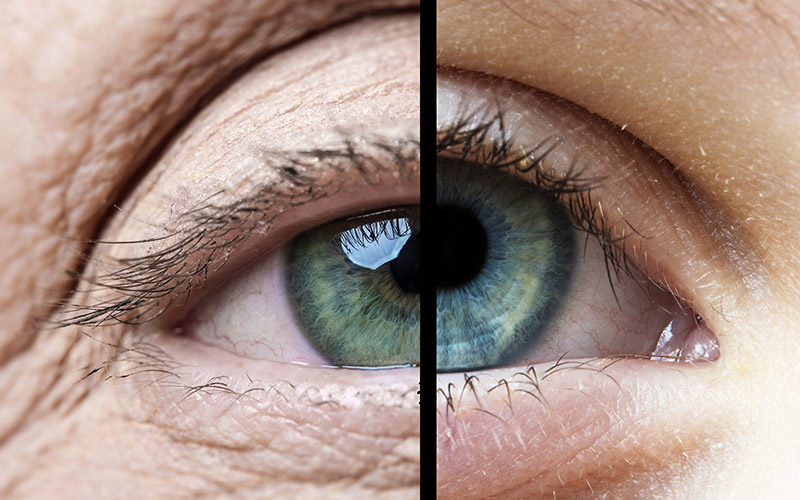
We all know that as we age our bodies change drastically. Over time, our skin loses its elasticity, hearing begins to decline, hair greys and thins, organ function declines, bones and joints become brittle and stiff and many other physical elements change both externally and internally. It’s easy to see when a person is aging from the outside, but what about the changes we can’t necessarily see or feel, like those that take place in the eyes?
Unbeknownst to most people, our eyes actually begin a process of change fairly early on in adulthood. Similarly to other organs, the eyes tend to peak in function around age 30 before beginning a slow and gradual decline into old age. Physically, the lenses of the eyes tend to stiffen and become denser, making it more difficult to see in low light situations or focus like they used to. The muscles of the pupil react more slowly to changes in exposure, and the nerve cells of the eye deteriorate and decrease in number. The eye also tends to produce less fluid as a person ages, sometimes leading to irritation and dryness.
Generally, most people begin to notice these changes to their eyes as their vision becomes slightly less clear over time. Often, people find themselves requiring more light than usual, having more difficulty distinguishing colors, or struggling to read text close up (often leading them to reach for “readers”).
If you have noticed similar vision changes and suspect that you need special care for your aging eyes, it is important to enlist the help of a professional ophthalmologist. Your ophthalmologist will give your eyes a full examination and help you improve your vision to support long-term eye health. Contact Eye Michigan to make an appointment.
